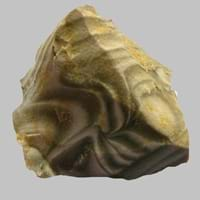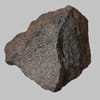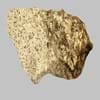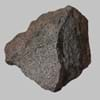Basanite and Flint
Definition
Definition
Basanite is a black basaltic rock which mainly contains plagioclase, augite, olivine and nepheline and is formerly used as a touchstone
Flint is a hard type of sedimentary rock that produces a small piece of burning material when hit by steel
History
Discoverer
Unknown
Unknown
Etymology
From Latin basanites + -ite
From Old English flint - a type of rock mainly known for high hardness and for giving off sparks when struck
Class
Igneous Rocks
Sedimentary Rocks
Sub-Class
Durable Rock, Hard Rock
Durable Rock, Hard Rock
Family
Group
Not Applicable
Not Applicable
Other Categories
Fine Grained Rock, Opaque Rock
Fine Grained Rock, Opaque Rock
Texture
Texture
Aphanitic to Porphyritic
Banded, Rough
Color
Black, Brown, Green, Grey, Red, White
Black, Brown, Green, Grey, Red, White
Maintenance
Less
Less
Durability
Durable
Durable
Water Resistant
Yes
Yes
Scratch Resistant
Yes
Yes
Stain Resistant
Yes
Yes
Wind Resistant
Yes
Yes
Acid Resistant
Yes
No
Appearance
Glassy or Pearly
Glassy or Pearly
Uses
Architecture
Interior Uses
Decorative Aggregates, Homes
Decorative Aggregates, Homes, Interior Decoration
Exterior Uses
As Building Stone, Garden Decoration, Office Buildings
As Building Stone, As Facing Stone, Garden Decoration, Office Buildings, Paving Stone
Other Architectural Uses
Whetstones
Curbing
Industry
Construction Industry
Arrowheads, Construction Aggregate, Cutting Tool, Spear Points
Arrowheads, Cutting Tool, Spear Points
Medical Industry
Not Yet Used
Not Yet Used
Antiquity Uses
Artifacts, Monuments
Artifacts
Other Uses
Commercial Uses
As a touchstone, Creating Artwork, Gemstone, In fire-starting tools, Manufacture of tools, Metallurgical Flux, Jewelry, To ignite fire, Used in flintlock firearms
Creating Artwork, Gemstone, In fire-starting tools, Manufacture of tools, Metallurgical Flux, Jewelry, To ignite fire, Used in flintlock firearms
Types
Types
Nepheline-Basanite, Analcite-Basanite and Leucite-Basanite
Not Available
Features
Clasts are smooth to touch, Easily splits into thin plates, Has High structural resistance against erosion and climate, Used as a touchstone
Clasts are smooth to touch, Easily splits into thin plates, Has High structural resistance against erosion and climate
Archaeological Significance
Monuments
Used
Not Yet Used
Famous Monuments
Data Not Available
Not Applicable
Sculpture
Not Yet Used
Not Yet Used
Famous Sculptures
Not Applicable
Not Applicable
Pictographs
Not Used
Not Used
Petroglyphs
Not Used
Not Used
Figurines
Not Yet Used
Not Yet Used
Fossils
Absent
Present
Formation
Formation
Basanite is a fine-grained, hard rock that forms when bits of lava shoot out of volcanoes.
Flint is formed by the decomposition and compaction of various organisms such as sponges and diatoms under the water.
Composition
Mineral Content
Augite, Feldspar, Ilmenite, Olivine, Plagioclase
Silicon
Compound Content
Potassium Oxide, Sodium Oxide, Silicon Dioxide
Silicon Dioxide
Transformation
Metamorphism
Yes
No
Types of Metamorphism
Burial Metamorphism, Cataclastic Metamorphism, Contact Metamorphism, Regional Metamorphism
Not Applicable
Weathering
Yes
No
Types of Weathering
Chemical Weathering, Mechanical Weathering
Not Applicable
Erosion
Yes
Yes
Types of Erosion
Chemical Erosion, Coastal Erosion, Glacier Erosion, Sea Erosion, Water Erosion, Wind Erosion
Chemical Erosion, Coastal Erosion, Water Erosion
Properties
Physical Properties
Hardness
7
7
Grain Size
Fine Grained
Very fine-grained
Fracture
Uneven, Splintery or Conchoidal
Conchoidal
Streak
White
White
Porosity
Highly Porous
Highly Porous
Luster
Waxy and Dull
Vitreous
Compressive Strength
Not Available
450.00 N/mm2
1
Cleavage
Non-Existent
Non-Existent
Toughness
1.5
1.5
Specific Gravity
2.5-2.8
2.5-2.8
Transparency
Translucent to Opaque
Translucent to Opaque
Density
2.7 g/cm3
2.7-2.71 g/cm3
Thermal Properties
Specific Heat Capacity
0.74 kJ/Kg K
19
0.74 kJ/Kg K
19
Resistance
Heat Resistant, Impact Resistant, Pressure Resistant, Wear Resistant
Heat Resistant, Impact Resistant, Pressure Resistant, Wear Resistant
Reserves
Deposits in Eastern Continents
Asia
Not Yet Found
Azerbaijan, China, Russia
Africa
Uganda
Not Yet Found
Europe
Germany, Hungary, Italy, Spain
Austria, Belgium, Cyprus, Denmark, France, Germany, Italy, Malta, Netherlands, Poland, Portugal, Romania, Spain, Sweden, Switzerland, Turkey, Ukraine, United Kingdom
Others
Greenland, Mid-Atlantic Ridge
Not Yet Found
Deposits in Western Continents
North America
USA
USA
South America
Bolivia, Brazil
Bolivia
Deposits in Oceania Continent
Australia
New South Wales, New Zealand, Queensland, South Australia, Western Australia
New Zealand, South Australia
All about Basanite and Flint Properties
Know all about Basanite and Flint properties here. All properties of rocks are important as they define the type of rock and its application. Basanite belongs to Igneous Rocks while Flint belongs to Sedimentary Rocks.Texture of Basanite is Aphanitic to Porphyritic whereas that of Flint is Banded, Rough. Basanite appears Glassy or Pearly and Flint appears Glassy or Pearly. The luster of Basanite is waxy and dull while that of Flint is vitreous. Basanite and Flint are available in black, brown, green, grey, red, white colors. The commercial uses of Basanite and Flint are as a touchstone, creating artwork, gemstone, in fire-starting tools, manufacture of tools, metallurgical flux, jewelry, to ignite fire, used in flintlock firearms.
|
||
|
||
|










